This information sheet provides advice for workers about duties under the model work health and safety (WHS) laws and what to do if workers experience workplace violence or aggression.
/doc/workplace-violence-and-aggression-advice-workers
This information sheet provides simple and practical guidance to support small business meet their work health and safety (WHS) duties to manage health and safety risks from workplace violence and aggression.
/doc/preventing-workplace-violence-information-sheet-small-business
This guide provides information for persons conducting a business or undertaking (PCBU), such as employers, on how to manage the risk of violence and aggression in the workplace, including gendered violence.
/doc/preventing-workplace-violence-and-aggression-guide
This information sheet provides advice for workers about duties under WHS laws and what to do if workers experience or witness sexual harassment at the workplace.
/doc/workplace-sexual-harassment-advice-workers
This information sheet provides simple, clear and practical guidance to support small businesses meet their work health and safety (WHS) duties to manage health and safety risks from sexual harassment.
/doc/preventing-workplace-sexual-harassment-guidance-small-business
This fact sheet outlines key information on minimising the risk of exposure to COVID-19 for delivery drivers.
/resources-and-publications/fact-sheets/delivery-drivers-minimising-risk-exposure-covid-19
This fact sheet outlines key information for workers relating work health and safety and COVID-19.
/resources-and-publications/fact-sheets/workers-whs-advice-covid-19
This fact sheet outlines key information for small business relating to work health and safety and COVID-19.
/resources-and-publications/fact-sheets/small-business-whs-advice-covid-19
Working in heat can be hazardous and can cause harm to workers in both indoor and outdoor work environments.
/resources-and-publications/fact-sheets/infographic-working-heat
This fact sheet outlines key information on managing the risks of working in heat in both outdoor and indoor workplaces.
/resources-and-publications/fact-sheets/managing-risks-working-heat-fact-sheet
This guide will help PCBUs, particularly principal contractors in charge of construction projects, to manage risk when working with prefabricated concrete elements.
/doc/guide-managing-risk-construction-prefabricated-concrete
This fact sheet has been prepared as part of the 2018 National Action Plan on Endometriosis. It aims to increase awareness of the prevalence and impact this chronic disease has on workers and its potential impact on workplace safety.
/doc/supporting-workers-endometriosis-workplace
This guide provides information on how to manage the risks associated with working in heat and what to do if a worker begins to suffer from a heat-related illness.
/doc/guide-managing-risks-working-heat
Use this information sheet to manage the health and safety risks of solvents at your workplace.
/doc/managing-risks-exposure-solvents-workplace-information-sheet
This handbook provides guidance on good work design. It includes the
/doc/principles-good-work-design
Use this guide to manage the risks of isocyanates at your workplace.
Isocyanates are hazardous chemicals used in manufacturing materials, like:
/doc/guide-handling-isocyanates
This paper reports on the attitudes of Australian workers towards accepting risk taking and rule breaking in the workplace.
/resources-and-publications/reports/attitudes-towards-risk-taking-and-rule-breaking-australian-workplaces
This study examined 523 worker fatalities for which there was sufficient information on the circumstances to make a judgement on the contribution of unsafe design to the incident.
/resources-and-publications/reports/work-related-fatalities-unsafe-design
This guide was developed and published prior to amendments to the model WHS Regulations in 2022. The guide is an archived document and is provided for background only.
/doc/dealing-workplace-bullying-workers-guide
Workplace bullying is a risk to health and safety. It can occur wherever people work together in all types of workplaces. It is best dealt with by taking steps to prevent it from occurring and responding quickly if it does occur.
/doc/guide-preventing-and-responding-workplace-bullying
Use this guide if you work with refractory ceramic fibres (RCF) or high biopersistence fibres and need to manage the health and safety risks to workers.
/doc/guide-handling-refractory-ceramic-fibres
This model Code of Practice provides practical guidance on managing electrical risks in the workplace.
Use this guide if you:
/doc/model-code-practice-managing-electrical-risks-workplace
Use this model Code of Practice if you design structures that will be used, or could reasonably be expected to be used, as a workplace. This includes architects, building designers and engineers.
/doc/model-code-practice-safe-design-structures
This model Code of Practice has been developed to provide practical guidance on how to manage health and safety risks associated with hazardous chemicals for persons conducting a business or undertaking who use chemicals in their workplace.
/doc/model-code-practice-managing-risks-hazardous-chemicals-workplace
This model Code of Practice provides guidance on managing risks of plant in the workplace.
Use this Code if you:
/doc/model-code-practice-managing-risks-plant-workplace
This guide helps major hazard facilities (MHF) operators&nb
/doc/guide-major-hazard-facilities-preparation-safety-case
This guide is for major hazard facility (MHF) operators on&
/doc/guide-major-hazard-facilities-safety-assessment
This guide gives major hazard facility (MHF) oper
/doc/guide-major-hazard-facilities-notification-and-determination
This guide gives major hazard facility (MHF) operators information on how to prove their safety case can achieve safe operation of their facility.
/doc/guide-major-hazard-facilities-safety-case-demonstrating-adequacy-safety-management-and-control-measures
This guide is to help major hazard facility (MHF) oper
/doc/guide-major-hazard-facilities-providing-information-community
Information on the representation and participation of workers in health and safety matters at the workplace, as well as guidance on resolving health and safety issues.
/doc/worker-representation-and-participation-guide
This model Code of Practice has been developed to provide practical guidance for persons who have duties to manage risks to health and safety under the WHS Act and Regulations applying in a jurisdiction.
/doc/model-code-practice-how-manage-work-health-and-safety-risks
This model Code of Practice provides guidance on managing the risk of a falls by a person from one level to another that is reasonably likely to cause injury.
/doc/model-code-practice-managing-risk-falls-workplaces
If you’re a person conducting a business or undertaking (PCBU), this model Code of Practice provides practical guidance on how to effectively consult with workers about work health and safety and meet your duties under the work health and safety (WHS) Act.
/doc/model-code-practice-work-health-and-safety-consultation-cooperation-and-coordination
Introduced by SafeWork SA’s Bryan Russell, this video outlines the ‘Seven Steps for Small Business’ approach from the South Australian work health and safety regulator.
/resources-and-publications/video-and-audio/seven-steps-small-business
Watch this video to see two young workers going about their day’s work, and how their interactions with their supervisors can have such an effect on the outcome – for good or bad.
/resources-and-publications/video-and-audio/right-start-building-safe-work-young-workers
Use this guide if your workplace carries out electroplating.
It can also be used by workplaces undertaking:
/doc/guide-controlling-risks-associated-electroplating
